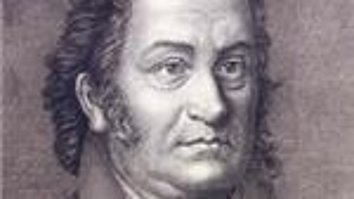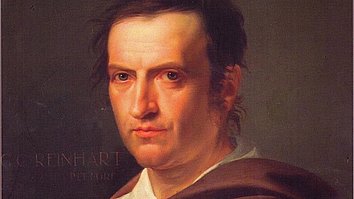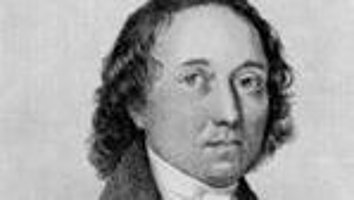City history
A brief history of Hof
In its more than 800-year history, Hof has experienced eventful times. From its medieval beginnings as a village settlement around 1180, through the turmoil of the Hussite wars in the 15th century and the great town fire in 1823, to the years as a border town right on the Iron Curtain before the fall of the Berlin Wall: at all times, history was - and still is - made in Hof.
According to the chronicler Enoch Widman, after whom a street in the Saale town is named, Hof's old town is said to have been settled from 1080. Around 1230, the noble family of the Andechs-Meranians is said to have founded the "New Town" (from the Upper to the Lower Gate, adjacent to the Old Town). This has had a written town charter since 1319. At first it was called "Hof des Regnitzlandes" after the princely administrative seat, the castle, of which only a wall remnant in Theaterstraße remains today, later only Hof. The old town was not incorporated into Hof until 1811. Further incorporations took place in 1869, 1906 and then again in the 1970s as part of the territorial reform.
From 1260 to today
Around 1260 the first city wall was completed and in 1264 a hospital for the old and the poor was founded, which has been in operation until the present day and is now active in the care of the elderly. In the 14th century, a period of economic boom began in the town, which by now had a population of about 4,000 and was one of the medium-sized towns of the era.
The coat of arms of the town of Hof also dates from this period. It shows two silver city towers in front of a red background. In front of them there is a black shield with a golden lion wearing a red crown. The towers symbolize the fortified city. The shield with the lion is the coat of arms of the reeves of Weida, who were the city lords of Hof until 1373 after the extinction of the Upper Franconian line of the Andechs-Meranians. In 1373, the reeves sold their rights to Hof to the Hohenzollerns, who were then burgraves of Nuremberg. They remained sovereigns until 1791, when Hof fell to their relatives in Prussia. After a four-year intermezzo, during which Hof belonged to Napoleonic France and for a few weeks to Austria, the town came to the Kingdom of Bavaria together with the Principality of Bayreuth in 1810.
The town was severely destroyed in 1430 by a Hussite raid, to which the Schlappentag, Hof's "national holiday," has been attributed since about 1900. As there was an abundance of sheep's wool in the surrounding area thanks to agriculture, a flourishing export trade with cloth making was able to develop. A milestone in the town's history is the introduction of cotton processing by Burgrave Johann in the 15th century: He thus laid the foundation for the textile trade with cotton, which was later to become the main pillar of Hof's economy. From raw materials imported from Egypt, India and later from the USA, countless Hof residents and many industrious hands in the surrounding area produced fabrics that found international sales.
In addition, Hof already had a good reputation as a beer town in the Middle Ages. Since the citizens had the brewing privilege, everyone was allowed to produce a fixed amount of "brew" each year. Professional private breweries did not yet exist at that time; each citizen had his needs produced in a brewhouse. It was not until the Industrial Revolution, which brought with it the necessary brewing and cooling technologies, that brewing also became industrialized: Twelve breweries existed in Hof at the beginning of the 20th century; two of them, Meinel and Scherdel, still brew today. Others live on as the names of beer brands.
After Luther's so-called "Thesenanschlag" of 1517, in 1529 the sovereign allowed the town's inhabitants to follow the Lutheran creed. Hof is still Protestant today, although the Bavarian administration, the immigration of industrial workers and the expulsion of Germans from the Sudetenland and Silesia brought Catholics to the city in greater numbers. Until the expulsion in 1515, there was also a small Jewish group in Hof, which ensured long-distance trade for the city. A renewed influx of Jews occurred in the industrial age, until the National Socialists used coercion and violence to ensure that the Jews had to leave Hof.
The great city fire of 1823 destroyed a large part of the Neustadt, including Ludwigstrasse. Reconstruction resulted in the almost closed Biedermeier-Classical ensemble of Ludwigstrasse and the adjacent streets, which still characterizes the image of the city today. The early 19th century also saw the creation of the Theresienstein (originally Fröhlichenstein) city park, which is the oldest citizens' park in Bavaria: it was never a royal park, but was created solely through the donation of money and land from the estates of wealthy citizens. Special merits for the city park were earned by city architect Gottlob Thomas, who ensured the expansion and beautification of the park during the time of the German Empire of 1871. His concept still characterizes the park, which was renovated in the old style on the occasion of the State Garden Show in 1994.
Starting in 1848, the city took a step into the industrial age with the opening of Hof's first train station. The first station was located in the center, on the site of today's city post office between Hallplatz and Schützenstraße. In 1880, the current main station was built, which had sufficient space on the outskirts of the city at that time and was no longer a dead-end station. From 1901 until the 1920s, the main station was connected to the city center by the Hof streetcar, which was subsequently replaced by city buses.
Also from the middle of the 19th century, one factory settled next to the other along the Saale. In addition to the ever stronger textile industry, porcelain industry also developed in the districts of Moschendorf and Krötenbruck as well as in the surrounding area, which also gained international esteem.
Hof survived the Second World War relatively unscathed: like everywhere else, numerous Hof soldiers were victims of the war, but the building fabric survived the war with little damage despite several air raids shortly before the end of the war. On April 15, 1945, Hof was captured by the Americans. In the immediate post-war period, some two million refugees, displaced persons and prisoners of war from the east are said to have passed through Hof. The Moschendorf camp, the largest refugee camp in Bavaria, temporarily housed nearly 600000 people. 12000 displaced persons stayed in Hof and made the population grow to the all-time high of 60000.
The division of Germany and the world into a free-market democratic bloc and a socialist bloc after World War II left the city in a peripheral position. Only a few kilometers away from Hof, some people experienced the situation of the divided Germany as closely as the inhabitants of Berlin: Mödlareuth, a village of 50 souls north of Hof, which had already been partly on Bavarian and partly on Thuringian territory for centuries, was divided by walls, fences, minefields and self-propelled grenades. This helped the village to tragic fame, turned it into a tourist destination and earned it the nickname "Little Berlin". Today, it is home to the DeutschDeutsche Museum (German-German Museum), which retraces the period of German division, the fall of the Wall and reunification.
This situation came to an end in 1989/90. Even before the fall of the Wall, on October 1, 1989, the world looked to the city on the Saale: on that day, the first train carrying Prague embassy refugees arrived in Hof, giving the city an important role in German reunification. More than 13600 people left everything behind at the end of 1989 to gain their freedom in or from Upper Franconia. In addition, 330000 visitors in 90000 cars traveled to Hof during the three days following the opening of the border on November 9. To help them, Hof's main train station was turned into a welfare station and the Freiheitshalle into a mattress camp. The logistical challenge that these streams of people presented to the city and its inhabitants was accepted willingly and with great cordiality in Hof.
The textile industry, which originally dominated the city, has transformed into a diverse economy. Although highly developed and internationally recognized textile industries are still located in Hof, the economic focus of the Saale city is now formed by the three major competence fields of water and environmental technology, logistics and automotive supply. In addition, the focus on media linkages helps to make Hof an attractive, forward-looking shopping city: The interplay of established retail and the use of modern media and Internet offerings, embedded in the core city concept 2020 in combination with the broad-based economy, the two universities and numerous soft location factors make Hof a modern city.




